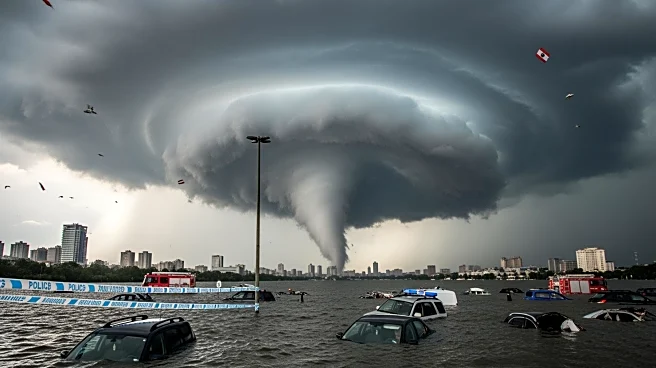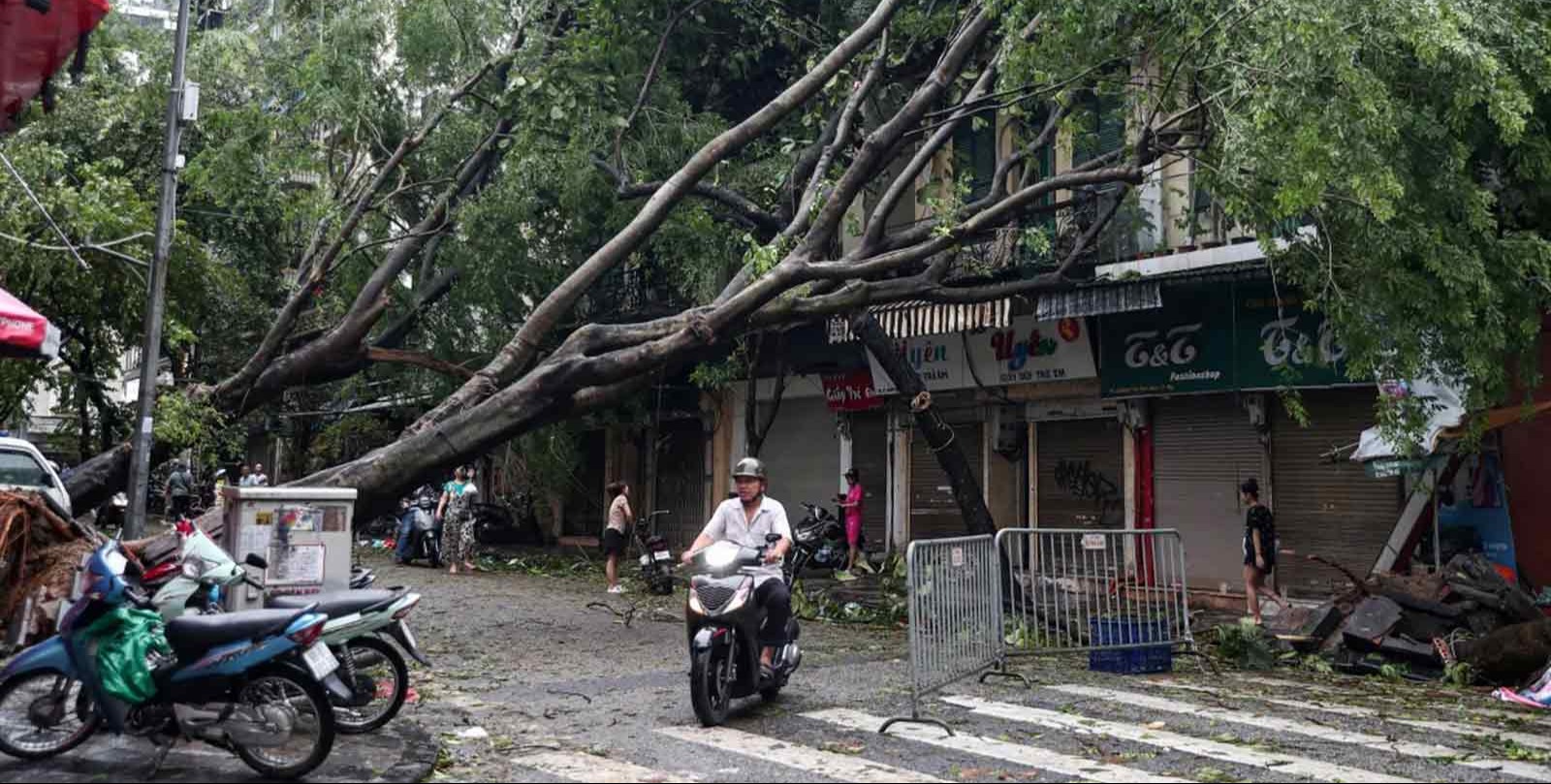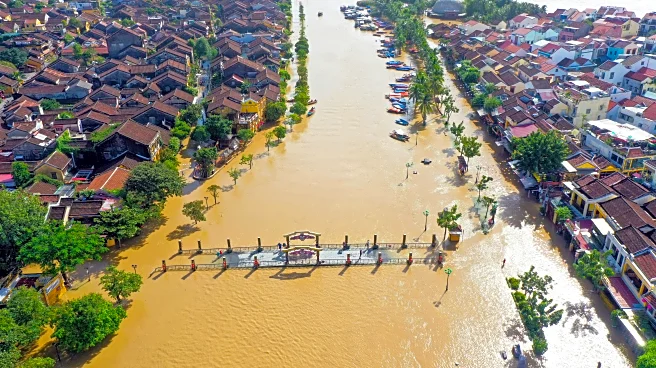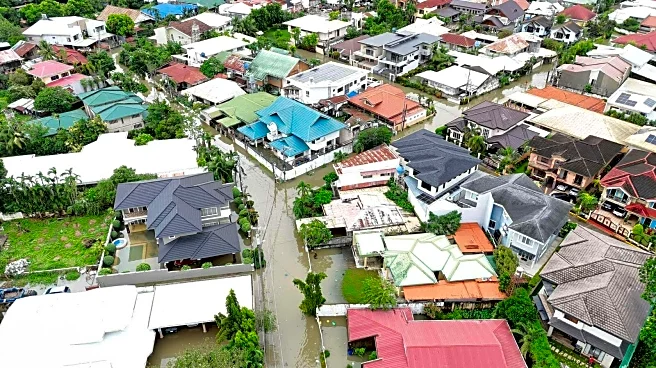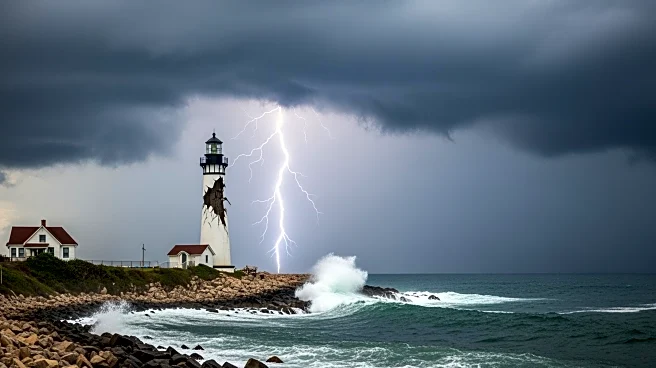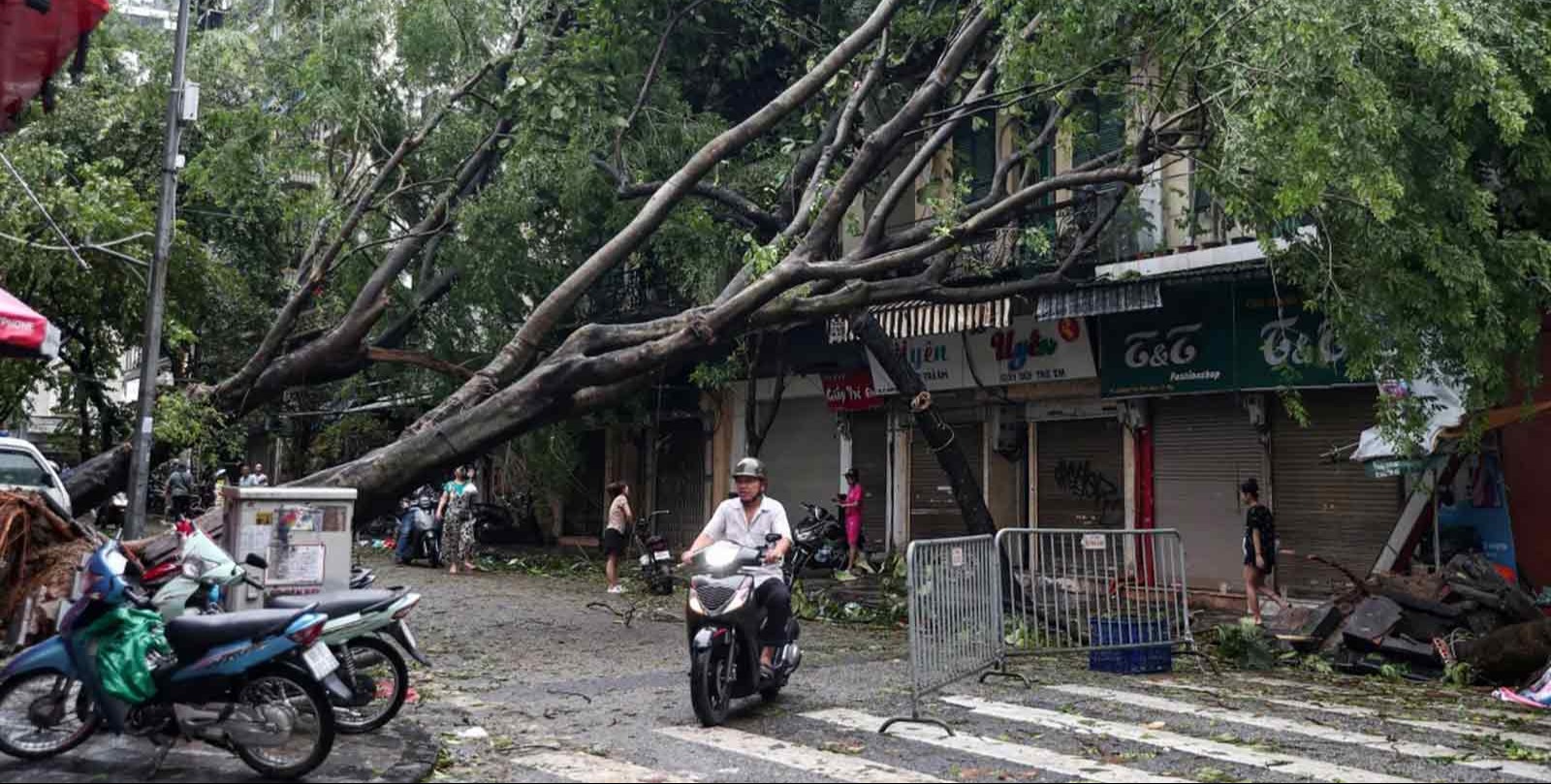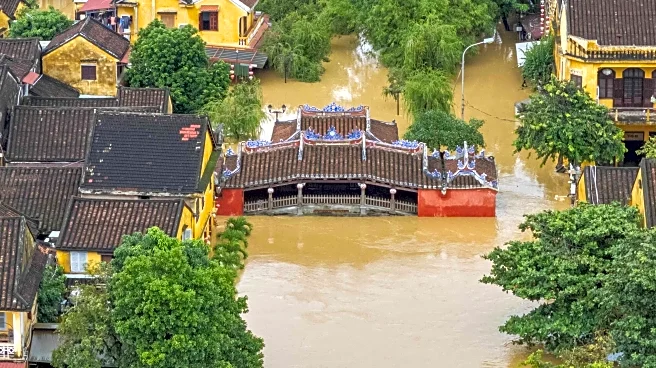What's Happening?
Typhoon Kalmaegi has struck the central Philippines, causing significant damage and disruption. The typhoon made landfall in Southern Leyte, bringing sustained winds of up to 140 kilometers per hour and gusts reaching 195 kph. The storm has resulted in at
least two fatalities, including an elderly villager who drowned in floodwaters and another who was killed by a fallen tree. Flash floods have trapped residents on rooftops and submerged vehicles in several areas, particularly in Cebu province. The Philippine Red Cross has reported numerous calls for rescue, but debris and floating cars have hindered efforts. In Eastern Samar, strong winds have damaged approximately 300 shanties, although no casualties have been reported. The typhoon is expected to move westward and exit into the South China Sea soon.
Why It's Important?
The impact of Typhoon Kalmaegi highlights the vulnerability of the Philippines to natural disasters, exacerbated by its geographical location within the Pacific Ring of Fire. The country experiences around 20 typhoons annually, along with frequent earthquakes and volcanic activity. This latest event underscores the ongoing challenges faced by the Philippines in disaster preparedness and response. The typhoon has displaced tens of thousands of people and disrupted transportation, with over 3,500 passengers stranded at seaports and 186 domestic flights canceled. The economic and social implications are significant, as communities struggle to recover from the damage and disruption caused by the storm.
What's Next?
As Typhoon Kalmaegi moves away from the Philippines, recovery efforts will begin in earnest. Authorities will focus on providing aid to affected communities, restoring power, and clearing debris to facilitate rescue operations. The government and disaster-response agencies will likely review and enhance their preparedness strategies to mitigate future risks. The typhoon's impact may prompt discussions on infrastructure resilience and climate adaptation measures, given the country's susceptibility to such events.
Beyond the Headlines
The frequent occurrence of natural disasters in the Philippines raises questions about long-term sustainability and resilience. The interplay between climate change and increased storm intensity may necessitate a reevaluation of current policies and practices. Additionally, the cultural and social dimensions of disaster response, including community solidarity and local knowledge, play a crucial role in recovery efforts.
